An article interprets the Colombian and Brazilian flavor of Latin American coffee beans
For professional baristas, please follow the coffee workshop (Wechat official account cafe_style)
The world of coffee is rich and interesting. Coffee from different continents has its own characteristics. Coffee is the product of the equator to 15 degrees north latitude. Therefore, it is produced in South America, Asia and Africa. However, the coffee produced from the equator to 15 degrees north latitude is so strong and bitter that only some people who drink coffee and do not know its taste will like it. In fact, the best coffee should be produced between 15 degrees north latitude and the Tropic of Cancer.
"coffee belt" and "coffee output"
Coffee production is mostly located between the Tropic of Cancer, 25 degrees north of the tropical or subtropical equator and 30 degrees south of the equator. An area with an annual average temperature of 16-25 degrees Celsius, no Frosts Descent and rainfall of 1600-2000 mm. At present, coffee is mainly produced in more than 70 countries, most of which are located in areas with an altitude of 300,400m, and coffee trees are sometimes planted on highlands at an altitude of 2000-2500 meters, but those planted on hillsides above 1500 meters above sea level have better quality.
Coffee trees grow in tropical or subtropical agricultural gardens centered around the equator and called coffee belts.
In addition, growing coffee also requires daylight and proper shade, which is most suitable for planting on fertile soil or volcanic ash soil. Therefore, the origin of coffee is widely distributed in South America, Central America, the West Indies, Asia, Africa, Arabia, the South Pacific and Oceania. Such as Ethiopia and Tanzania in Africa, Brazil, Colombia, Jamaica, Guatemala, Mexico, Honduras, Costa rica in Central and South America, Vietnam and Indonesia in Southeast Asia, are all major coffee producers.
In terms of production, Central and South America accounts for about 60 per cent of the world's coffee production, Africa and Arabia account for about 20 per cent, and the remaining 20 per cent are distributed in Asian countries and islands.
In South America, Brazil accounts for 30-50% of the world's output, while Colombia accounts for 10-20%. At present, the coffee production of Vietnam in Asia has surpassed that of Colombia, and Indonesia has become the fourth largest coffee producer in the world.
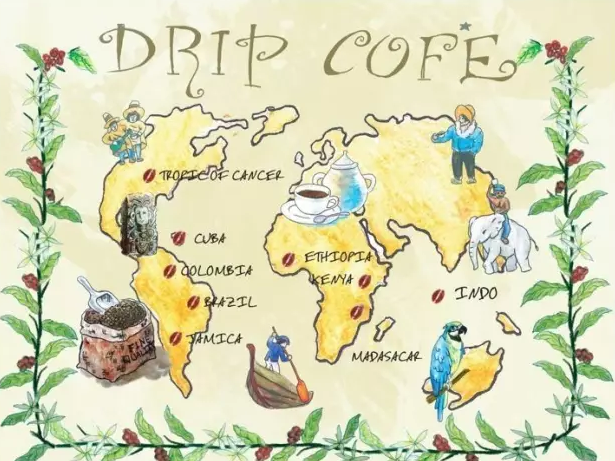
Central and South America
Characteristics of taste: balanced, moderate acidity and mellow taste
Central and South America is the largest coffee producing area in the world, and there are countless boutique coffee here. Take Colombia, Guatemala or Brazil as an example, good coffee is enough to make people dazzling. What is the resource advantage that makes Central and South America so good?
In 1721, French naval officer Gabriel Mathieu de Clieu went through difficulties and obstacles to bring the first coffee sapling from Africa to the Latin American island of Martinique, which was the origin of coffee cultivation in Latin America. Because France was under the Bourbon dynasty, Arabica coffee grown in Latin America had another name, bourbon, which is now famous in the coffee industry. Bourbon is now an important branch of coffee in Arabica. The overall flavor of Latin American coffee is famous for its balance, and all the flavors in the coffee can be found in Latin American coffee. The widespread use of wet treatment of raw beans is also one of the characteristics of Latin American coffee, good processing also makes its beans larger and more uniform than African coffee, and the defect rate is lower.
[representative]:
Colombia
Colombia is one of the largest producers of high-quality coffee in the world, a bright pearl in the world coffee map and a coffee land blessed by God. Arabica coffee is grown on steep slopes 800 to 1900 meters above sea level and is hand-picked and washed.
[Santa Rita, Colombia] (deeply baked in water)-sucrose, clean, medium thickness, Santa Rita Manor, located in Antioquia, Colombia, treats coffee in the traditional way: picking coffee cherries by hand. Then the coffee fruit is washed and dried in a scaffolding. The environment around the Andes makes this coffee-growing area rich in volcanic soil and rich in water resources.
El Salvador
El Salvador coffee is also extremely high quality, and unique flavor: a strong sense of balance, fresh and lively, mild taste, sweet and pleasant, can be described as "pure natural flavor". This is because of the fertile soil, suitable altitude, good climate, intergenerational planting techniques and tree species with fine pedigree.
[El Salvador] (half-sun moderate baking)-Nuts chocolate, passion fruit, cream, strawberries, the national average of high altitude, such a geographical environment is very conducive to the growth of coffee, farmers use the traditional way of planting: almost 100% shade planting. Pacamara is the artificial breeding variety of Pacas and Maragogipe, and Pacamara is a rare excellent variety under artificial breeding.
Guatemala
Guatemala is a coffee producing area that can not be ignored and is a typical representative of coffee flavor diversity. SHB (hardest bean) in Guatemala is almost a well-known synonym for high-quality coffee. This is because there are more than 300 kinds of microclimate, high mountains, Pacific Ocean, Atlantic Ocean, huge volcanic lake, Mexican plain. And rich geographical and climatic resources.
[Guatemala Dome Chateau bourbon] (moderately baked in the sun)-pineapple, brandy, white wine, rich wet aroma, good balance, high sweetness, elegant taste, full of sweetness and smoked plum aromas.
Bolivia
The unique tropical rain forest environment in some parts of Bolivia provides excellent natural conditions for the growth of organic coffee. The aroma of Bolivian coffee is rich and unique, both after the bean is ground and the aroma of the coffee is quite rich, similar to the mixture of flower and fruit aromas, the perfect nutty flavor is impressive.
[Lake Titicaca, Bolivia] (moderately roasted in water)-dry aromas of roasted nuts and almonds, soft acidity of oranges and white grapefruit on the palate, sweet caramel as a whole, smooth texture of firm fruit milk, cleanliness and balance, and attractive herbal aromas.
Panama
Panamanian caffeine is famous in the world, and the reason is that it is closely related to Panama's unique physical and geographical conditions. Moderate curry body, smooth taste, delicate acidity, well-balanced taste value, coupled with subtle flavors such as caramel, chocolate, citrus and jasmine.
[Panamanian Ireta Manor SHB Kaddura] (moderately roasted with water washing)-buttered bread, sweet apricot kernels, round acidity, Ireta Manor is one of the large Panamanian coffee plantations and one of the best Panamanian famous coffees.
Costa Rica
The coffee beans produced at the high latitudes of Costa Rica are famous in the world, full-bodied, mild in taste, but extremely sour. The coffee beans here have been carefully processed, which is why they have high quality coffee. Located in the south of SanJos é, the capital of Tarasu, Costa Rica is one of the most valued coffee growers in the country.
[Chateau San Romain, Costa Rica] (deeply baked in water)-soft orange notes, toast, caramel cocoa sweet, located in Tara Zhu producing area, coffee plant 1750-1850 meters above sea level, variety Red Catuai, manor owner Gutierrez family owns 50 hectares of coffee planting area.
Brazil Coffee
When it comes to the origin of coffee, the first thing that comes to mind is Brazil in South America, because it is the largest coffee producer in the world. There is a wide variety of Brazilian coffee, the vast majority of which are unwashed and sun-dried, classified according to the name of the state of origin and the port of transport. Brazil has 21 states and 17 states produce coffee, but four of them produce the largest, accounting for 98% of the country's total output.
The taste of Brazilian coffee has a low sour taste, with the sweet and bitter taste of coffee, the entrance is very smooth, but also with a hint of grass aroma, slightly bitter in the fragrance, smooth and smooth, with a pleasant aftertaste.
They are classified according to the state of origin and the port of transport. Brazil has 21 states and 17 states produce coffee, but seven of them produce the most, accounting for 98% of the country's total output.
The topography of Brazil is mainly divided into two parts, one is the Brazilian plateau above 500 meters above sea level, distributed in the central and southern parts of Brazil, and the other is the plain below 200 meters above sea level, mainly in the north and west of the Amazon River basin.
State of Sao Paulo (Mogiana, Centro-Oeste)
State of Parana (Norte Pionerio do Paran á)
Bahia State (Planaltoda Bahia, Cerrado da Bahia, Atlantico Baiano)
Espiritu Santo (Montanhas do Esp í rito Santo, Conilon Capixaba)
Minas Gerais State (Sul de Minas, Cerrado Mineiro, Chapada de Minas, Matas de Minas)
Londonia (Rond?nia)
Rio de Janeiro State (Rio de Janeiro)
Sao Paulo, Sao Paulo State
Morgiana / Mogiana
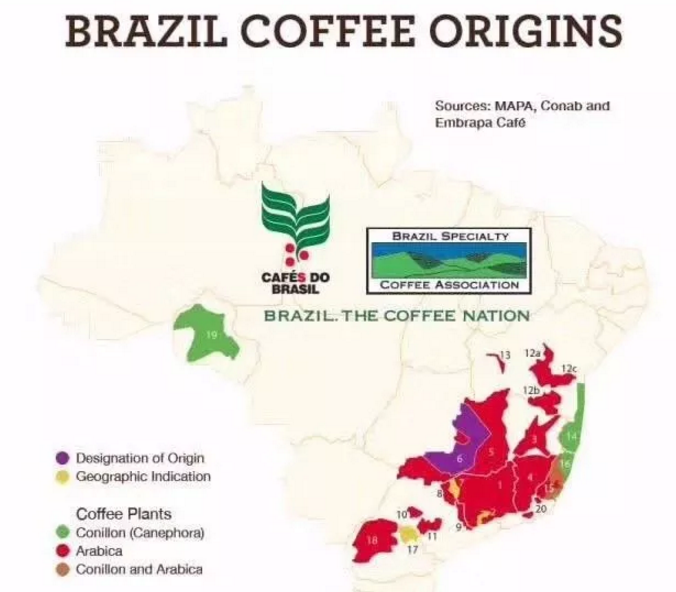
This area is very close to the south of Minas. Coffee is grown between shrubs, grasslands and other vegetation. There are many farming families in this area, some of which operate in the traditional way of large farms, while others operate in a small-scale and modern way. Modern science and technology mixed with mountain coffee cultivation culture has created the highest quality raw coffee beans.
Centro-Oeste / Midwest
(Gar?a,Marilia and Piraju)
Coffee beans are generally grown in this area by combining large estates with traditional production lines. Although production seems to be declining, it is more pursuing the production of higher quality raw beans.
About the Brazilian Santos
Santos / Santos taste mellow, neutral, can be drunk alone, and mixed with other kinds of coffee beans to form a comprehensive coffee is also a good choice. Santos has no outstanding advantages, but there are no obvious defects, mild and smooth taste, low acidity, moderate mellow, light sweetness, these soft flavors mixed together, to distinguish them one by one, is the best test of the taste buds, which is why many Santos fans love this kind of coffee.
Santos coffee grows in the area of Sao Paulo and is a descendant of Arabica trees from Bourbon Island in the 18th century under the name of export port Santos (Santos). It belongs to the bourbon subspecies (var. Bourbon). Before the age of three to four, bourbon trees bear small, twisted beans, called bourbon Santos, which are more advanced Brazilian beans, usually called "Brazil" directly in cafes. After three or four years old, bourbon trees only produce large, flat beans called "Flat Bean Santos", which are flat in taste and cheap in price.
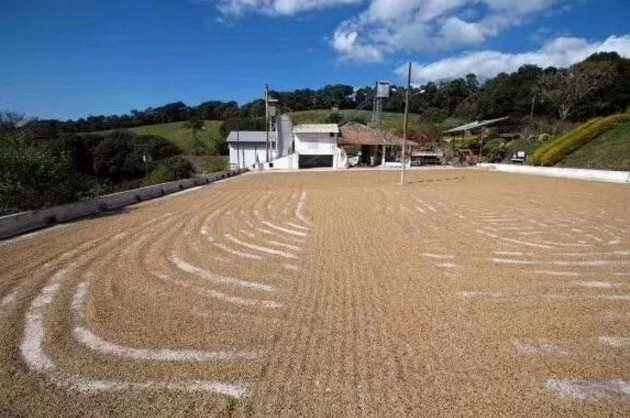
Parana State Parana
Norte Pionerio do Paran á
The state, which used to be Brazil's largest production region, now has its own unique production technology.
After discovering a decline in the unit yield of coffee woodland, producers in Parana created a new "closed planting system". At present, a large number of coffee trees, seedlings per hectare can better withstand the cold wind, but also ensure a more regular yield.
Bahia, Bahia State
Bahia State / Atlantico Baiano
Robusta beans are mainly produced on large farms.
Shapada / Planaltoda Bahia
The area is located in the central state of Bahia and mainly produces hand-screened Arabica coffee. It mainly adopts the method of washing.
Bahia Hilado / Cerrado da Bahia
This area, located in the western state of Bahia, is generally considered to be the latest coffee-growing area in Brazil. Modern technologies for irrigation and harvesting are widely used in this area.
Espirito Santo, Esp í rito Santo
Montanhas do ESP í rito Santo
Conilon Capixaba
The state is mainly divided into two regions: robusta beans are grown on both large and small estates in the north, while typical mountain-grown coffee is grown in the south, which is less common. There are both washing and sun exposure in this area.
Minas Gerais Minas Gerais
South Minas / Sul de Minas
The small manor area produces about 8-10 million bags of coffee beans growing on the mountain. Suitable altitude, undulating terrain and climate conducive to growing coffee, rainfall is concentrated in the months when the fruit needs to grow, and the climate is dry in the months when the harvest is needed.
Syrador / Cerrado Mineiro
Growing coffee in Hirado (also known as Savannah) is a victory for Brazilian coffee technology. More and more large coffee plantations in Syracuse use high technology for production, and this is the case in very few areas. Plateau climate, four distinct seasons, fruit ripening is very stable, in the harvest season is not at all. Savannah coffee is generally treated in the sun, which is also a trend in current processing.
Minas Shapada / Chapada de Minas
In the northern part of Minas Gerais, the area is very small, but the quality of raw beans is among the best in the world.
Mount Minas Gerais / Matas de Minas
It is a very large area with a very diverse ecosystem and is the oldest coffee growing area in Brazil, and its highest altitude is the best area for coffee processing.
Rond?nia, Londonia
This area mainly produces robusta coffee.
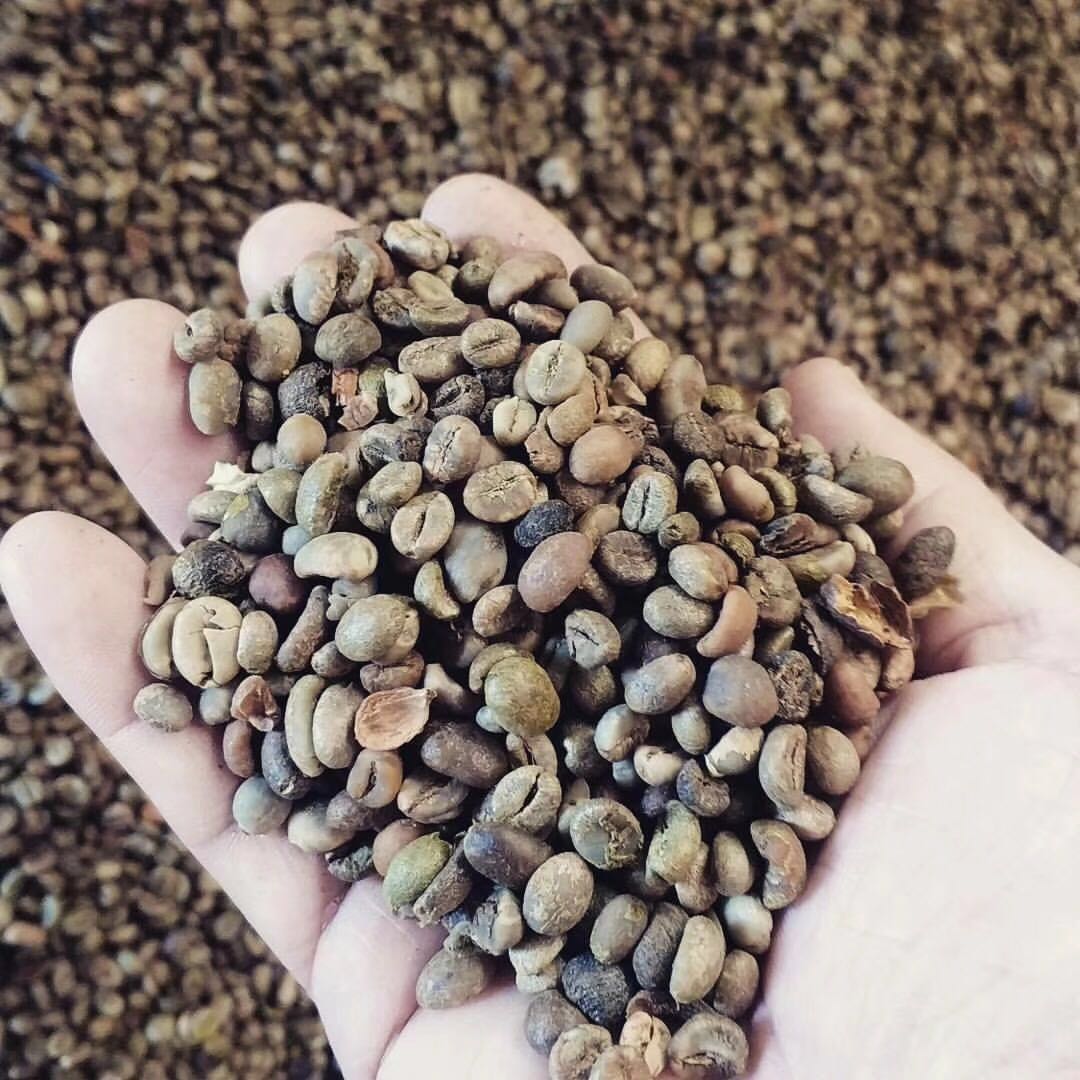
Rio de Janeiro, State of Rio de Janeiro
Mainly grow Arabica species. Compared with other producing areas, it has excellent port traffic advantages.
Hierarchical reference:
There are many kinds of coffee in Brazil, which are mainly treated by solarization, which are classified according to the name of the state of origin and the port of transport.
Due to the scattered origin and uneven quality, the classification standards are not unified:
NO.2~NO.8 according to the amount of sundries
There is NO.13~NO.19 depending on the size of the beans.
About the Brazilian Fine Coffee Association
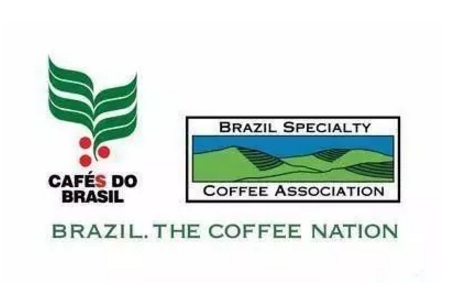
The Brazilian Fine Coffee Association (BSCA), located in Varginha, South Minas, is a non-profit coffee organization founded by 12 Brazilian coffee producers in 1991.
BSCA aims to improve the quality of coffee production in Brazil, to promote the commercialization and industrialization of Brazilian coffee, and to develop ecological agriculture through cooperation between domestic and international organizations to help the sustainable development of coffee growing areas.
references
Brazilian Fine Coffee Industry Association
Wikipedia
Brazilian pectin sun-dried coffee beans
When it comes to solarization, the most widely used is Brazil; the disadvantage of solarization is that it is easy to mix defective beans, and the appearance between beans and beans is poor.
Dry treatment (secado), also known as natural all-day exposure (natural).
Sun drying is one of the ways to treat coffee fruits, which is treated by drying coffee cherries on the sun field for 3-4 weeks after harvest, turning evenly several times a day, so that coffee cherries are evenly heated, and the core and skin of coffee fruit will be separated after dryness. Then remove the pulp and peel with a sheller. And so on, the screening is completed.
There are two methods of fermentation, namely wet hair alcohol and dry hair alcohol, as the name implies, the former adds water, the latter does not add water. In the process of producing alcohol, the seeds and internal pulp will have special changes, which is one of the steps that most affect the flavor of coffee after washing, at this time, the coffee beans are still wrapped in the pericarp, the moisture content is up to 50%, and must be dried. Reduce the moisture content to 12%, otherwise they will continue to be mellow, moldy and rotten. The better treatment is to use sunlight to dry, although it will take 1-3 weeks, but the flavor is very good and very popular. In addition, machine drying is used in some places, which greatly shortens the processing time and makes the flavor inferior to that of sun-dried coffee.
Brazilian coffee fields are endless and are mostly harvested mechanically in order to meet the economic benefits. When 75% of the coffee fruit in the coffee garden turns red, mechanical harvesting is started, followed by the same pre-washing operation, which is moved into the sink to remove floating beans, sift out the sunken beans, and then use a large pulp screening machine to dig out the pulp and remove the pods covered with pectin. The next stage is separate from the washing method: the sticky pods do not need to be moved into the tank to ferment, but to the outdoor bean drying farm. Because of the dry climate in Brazil, the sticky pectin on the pods will harden in about a day or so.
Then use a large number of manpower to turn up and down, so that the pods dry evenly inside and outside, so as not to return to moisture and stink. For about two to three days, with the help of the natural forces of sunlight and dry climate, the pods can achieve a certain degree of dehydration. Then further dry with a dryer, the water content is reduced to 10.5%, and the pods are stored in a special container for about 10 days to further mature, in order to stabilize the quality, remove sheep skins (pods) before export, remove coffee beans, and pack them in stages. The adhesion of the mucous membrane is very strong and is not easy to remove. It must be placed in the slot for about 18-36 hours to make it alcohol and decompose the mucous membrane.
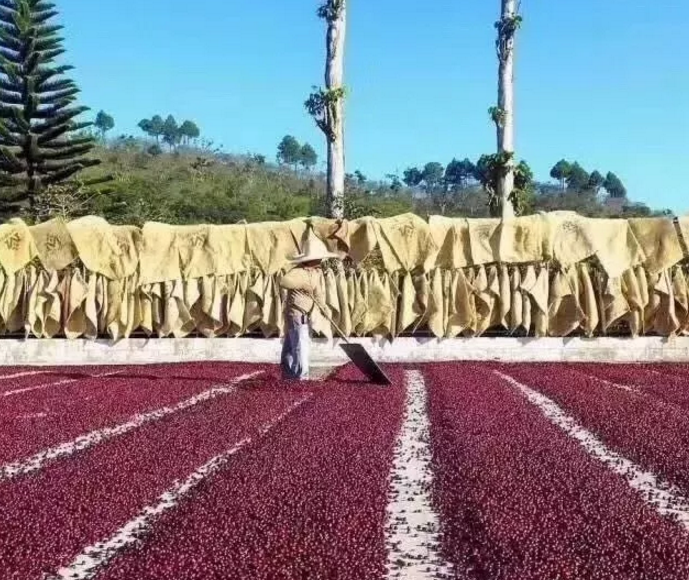
Coffee fruit after picking, directly in the sun drying, depending on the weather conditions, generally to dry 1- 2 weeks, so that the water content of coffee beans reduced to 10%-12%, and then remove the dry peel pulp with a machine. Beneficio plants generally retain the parchment (pergamino) on the outside of the beans when they are stored and remove it before export (Costa Rican law states that green coffee beans cannot be exported with a parchment). This treatment generally requires sufficient sunlight in the area of origin.
When it comes to coffee production, the first thing people think of is Brazil in South America, because it is the world's largest coffee producer. There are many types of Brazilian coffee, most of which are unwashed and dried. They are classified according to the state of origin and port of shipment. Brazil has 21 states, 17 of which produce coffee, but four of them produce the most, accounting for 98% of the country's total production.
Brazilian coffee taste with a low acidity, with the sweet and bitter taste of coffee, the entrance is extremely smooth, but also with a touch of grass aroma, in the fragrance slightly bitter, sweet smooth smooth, the aftertaste can make people comfortable and carefree.
Taobao Link: item.taobao.com/item.htm? spm=a1z10.5-c.w4002-15673140460.31.72521f08PqQm4A&id=40061745543
Important Notice :
前街咖啡 FrontStreet Coffee has moved to new addredd:
FrontStreet Coffee Address: 315,Donghua East Road,GuangZhou
Tel:020 38364473
- Prev
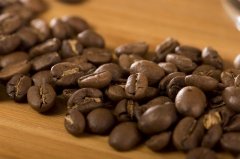
What kind of beans are Sidamo 90 + candlelight and 90 Plus coffee beans? What are the flavor characteristics?
For the exchange of professional baristas, please follow the coffee workshop (Wechat official account cafe_style) 90 +, a boutique coffee trader from the United States-"Ninety plus Coffee". The pursuit of the ultimate flavor of coffee, although it has not been established for a short time, has made the coffee industry all over the world aware of the name. In 2006, NinetyPlus began to study the treatment of top coffee beans
- Next
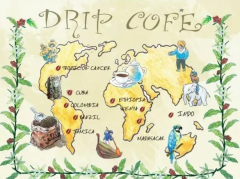
Representative of American coffee beans: characteristics of coffee from Brazil, Colombia, Costa Rica and Panama
Exchange of professional baristas Please pay attention to Coffee Workshop (Wechat official account cafe_style) Coffee is a rich and interesting world. Coffee from different continents has some common characteristics. Coffee is the product of 15 degrees latitude from the equator to the north, so it is produced in South America, Asia and Africa. However, the coffee produced from the equator to 15 degrees north latitude is too strong and bitter, so there is only some to drink.
Related
- Detailed explanation of Jadeite planting Land in Panamanian Jadeite Manor introduction to the grading system of Jadeite competitive bidding, Red bid, Green bid and Rose Summer
- Story of Coffee planting in Brenka region of Costa Rica Stonehenge Manor anaerobic heavy honey treatment of flavor mouth
- What's on the barrel of Blue Mountain Coffee beans?
- Can American coffee also pull flowers? How to use hot American style to pull out a good-looking pattern?
- Can you make a cold extract with coffee beans? What is the right proportion for cold-extracted coffee formula?
- Indonesian PWN Gold Mandrine Coffee Origin Features Flavor How to Chong? Mandolin coffee is American.
- A brief introduction to the flavor characteristics of Brazilian yellow bourbon coffee beans
- What is the effect of different water quality on the flavor of cold-extracted coffee? What kind of water is best for brewing coffee?
- Why do you think of Rose Summer whenever you mention Panamanian coffee?
- Introduction to the characteristics of authentic blue mountain coffee bean producing areas? What is the CIB Coffee Authority in Jamaica?

